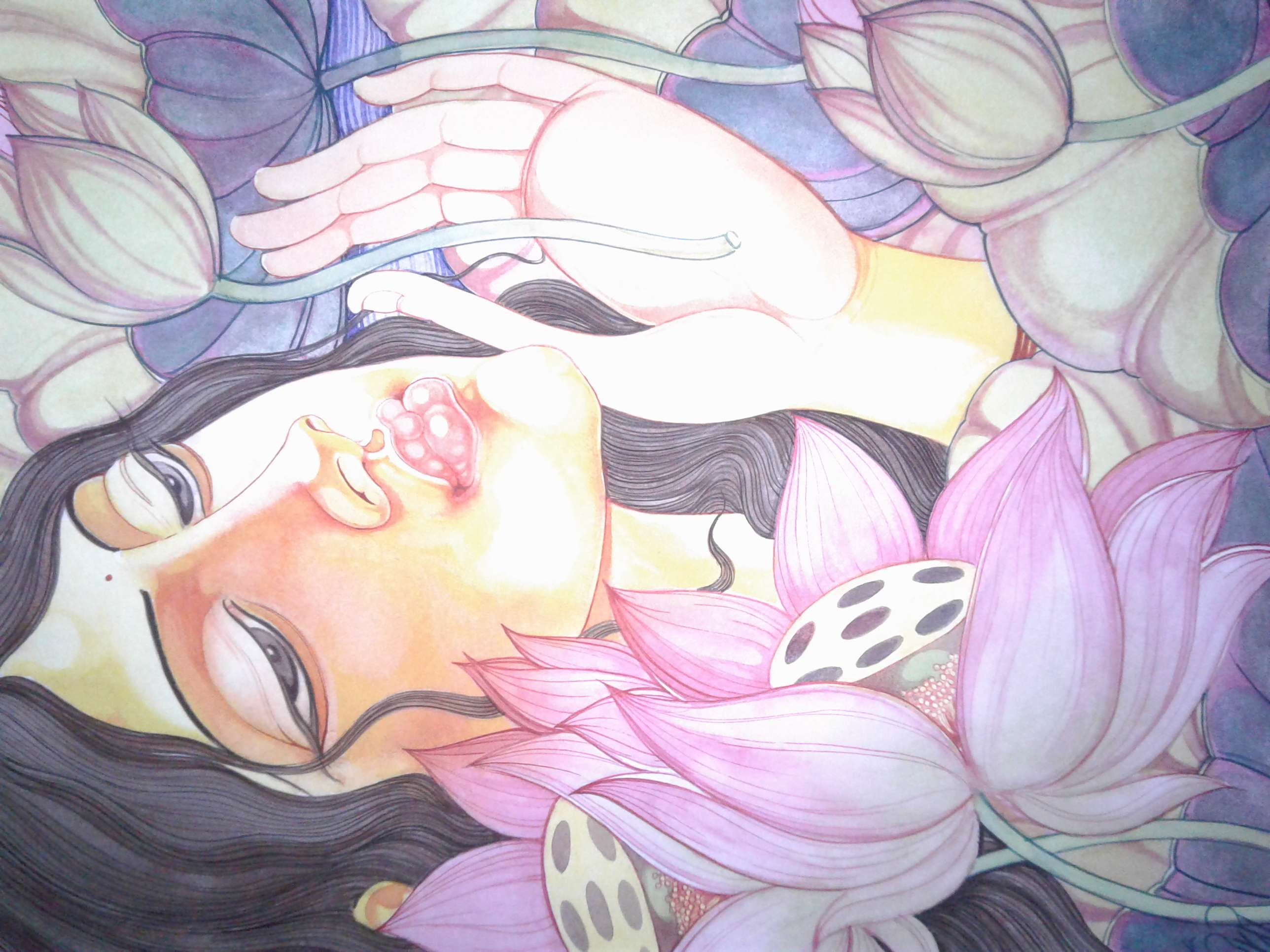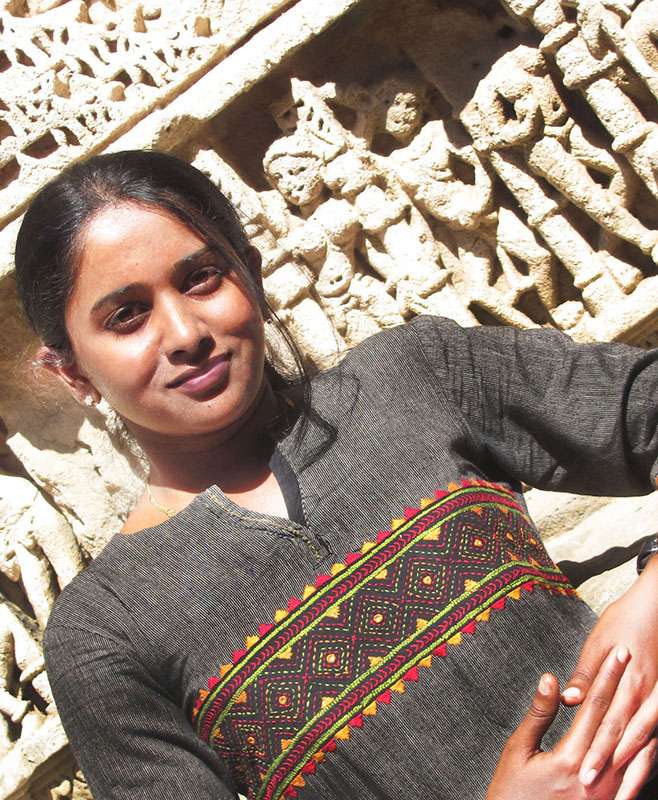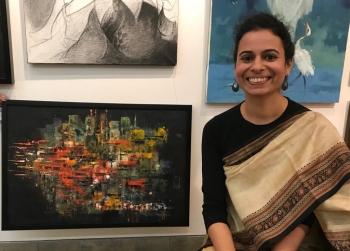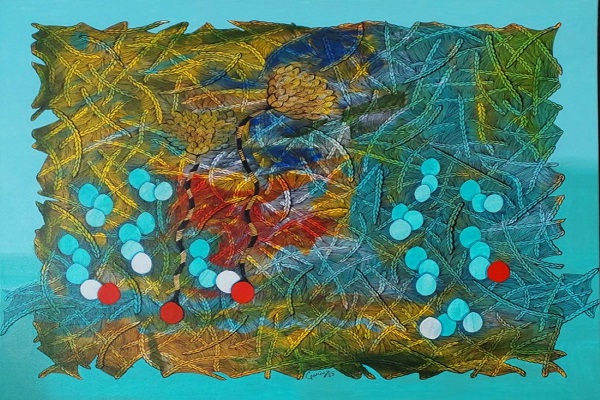
A dynamic hub has emerged for contemporary creative expression in India's cultural heritage and artistic legacy. Whether amidst the lively streets of Mumbai or the tranquil landscapes of Kerala, artists are boldly pushing boundaries. They seamlessly blend traditional techniques with innovative forms, creating narratives that mirror the intricate complexities of the modern world. For collectors and art enthusiasts, navigating this rich tapestry of contemporary art can be an exhilarating and daunting adventure.
This handbook aims to be your compass, guiding you through acquiring contemporary Indian art. We'll explore the myriad styles, delve into the market dynamics, and provide practical tips for building and caring for your art collection. Whether you are a seasoned collector or a novice buying Indian art, we aim to empower you with knowledge and inspiration.
Understanding and Appreciating Contemporary Indian Art
In the kaleidoscope of India's artistic panorama, contemporary art emerges as a dynamic and evolving facet, encapsulating the spirit of modernity while rooted in the country's rich cultural heritage. It is a captivating intersection of tradition and innovation. It breathes with vitality, finding inspiration in the vibrant streets of Mumbai and the serene backwaters of Kerala. As contemporary storytellers, artists employ various mediums and styles to weave narratives that echo the intricacies of our constantly evolving world.
One key to understanding this art form is decoding the symbiosis of tradition and modernity. Unlike traditional art, contemporary Indian art often challenges conventional norms, pushing boundaries regarding subject matter and artistic techniques. It invites viewers to question, reflect, and engage with the narratives woven into the fabric of each piece.
To appreciate contemporary art is recognizing the artist's dialogue with societal shifts, cultural nuances, and global influences. It's about decoding the layers of meaning behind every creation and understanding the artist's intent in navigating the delicate balance between heritage and contemporary relevance.
Comprehending the Language of Contemporary Indian Art
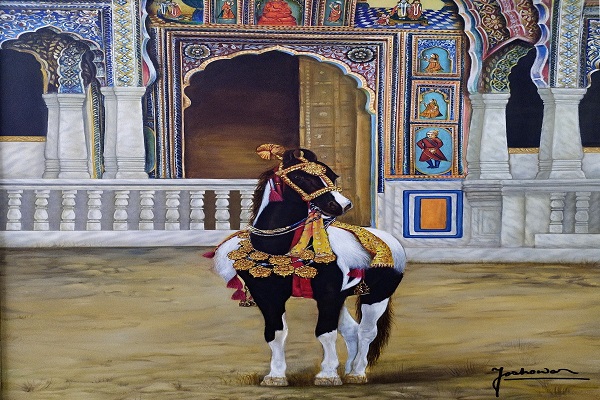
Embarking on a journey into contemporary Indian art is akin to unraveling a captivating story through colors, textures, and symbols.
Decoding Symbolism and Cultural References
Contemporary art is a living language, a dynamic conversation between tradition and modernity, where artists deftly employ symbols and cultural references to communicate nuanced narratives.
1. Mythology and Tradition
Contemporary art often draws from the deep well of mythology and tradition. Each stroke on the canvas, every sculpted form, carries layers of cultural references. Deciphering these symbols unveils a narrative that connects the modern artwork to its historical roots, providing a window into the artist's interpretation of tradition in a contemporary context.
2. Social Commentary
Beyond the mythological, many artists use their work to offer social commentary. Recognizing symbols representing societal issues, cultural shifts, and political narratives allows viewers to engage more deeply. The art becomes a mirror reflecting the artist's perspective on the world, encouraging dialogue and introspection.
3. Nature and Spirituality
Nature holds profound significance in Indian art, with symbols reflecting spiritual beliefs and environmental consciousness. From the majestic depictions of wildlife to the serene symbolism of natural elements, understanding these references adds a layer of appreciation for the interconnectedness between art, culture, and the natural world.
Exploring Diverse Mediums and Artistic Techniques
Let's focus on how artists engage with diverse mediums and employ various techniques to breathe life into their visions.
1. Traditional vs. Contemporary Mediums
Contemporary Indian artists showcase a remarkable diversity in their choice of mediums. While traditional forms like oil on canvas and watercolors persist, modern artists often push boundaries with digital art, installations, and mixed media. Exploring this range of mediums allows art enthusiasts to appreciate the dynamic evolution of artistic expression.
2. Experimentation with Techniques
Artistic techniques in contemporary art are as diverse as the artists themselves. From traditional brushwork to experimental techniques like drip painting and impasto, each stroke and texture conveys a unique message. Recognizing and appreciating these techniques enhances one's ability to engage with the art on a visceral level, understanding the artist's intent and craftsmanship.
3. The interplay of Light and Color
Masters of contemporary Indian art skillfully manipulate light and color to evoke emotions and create immersive experiences. Understanding the intentional use of color palettes and the interplay of light adds a layer of sophistication to the viewer's appreciation. It transforms observing into an exploration of the artist's mastery over their chosen medium.
Identifying Personal Preferences and Connecting with Specific Styles
.jpg)
The process of collecting goes far beyond mere acquisition; it is an intimate journey of self-discovery and connection. As we delve into contemporary art, personal preferences and forging meaningful connections with specific artistic styles are pivotal.
1 .Emotional Resonance
Art is a deeply personal journey. Reflect on artworks that evoke emotions or resonate with your experiences. Whether it's the vivid colors of a traditional Rajasthani painting or the abstract forms of a contemporary piece, identify the styles that speak to you on a visceral level.
2. Cultural Connection
Consider your cultural roots and the stories that resonate with you. Contemporary Indian art often draws inspiration from mythology, folklore, and societal narratives. Connecting with art reflecting your cultural identity can enrich your appreciation and connection with the chosen pieces.
3. Experimentation and Exploration
Allow yourself the freedom to explore. Attend art exhibitions, visit galleries, and engage with various forms and styles. Your preferences may evolve, and exploration contributes to a deeper understanding of your unique artistic sensibilities.
Balancing Personal Taste with Investment Potential
Embarking on the enriching journey of collecting art is a deeply personal and captivating endeavor. As you explore the dynamic realm of contemporary Indian art, the interplay between personal taste and investment potential becomes a crucial aspect of your art-buying experience. Achieving the perfect equilibrium between pursuing your artistic inclinations and navigating the realm of well-informed, strategic choices is more than just a skill; it is an art form. It holds the key to curating a collection that not only strikes an emotional chord but also resonates strongly regarding its financial value.
1. Passion vs. Investment
While personal passion should guide your art selection, it's crucial to acknowledge the investment potential. Some pieces may align with your taste but may also hold value in the art market. Finding a balance ensures that your collection reflects not only your aesthetic preferences but also a potentially rewarding investment.
2. Research and Consultation
Stay informed about market trends and the trajectory of artists whose work you admire. Consult with art experts, galleries, and collectors to gain insights into the investment potential of specific styles or artists. A well-informed decision balances passion with a strategic approach.
3. Diversification
Consider diversifying your collection. While focusing on personal taste, incorporating various styles and mediums can enhance the overall appeal of your collection. Diversification also mitigates risks associated with market fluctuations, ensuring a well-rounded and resilient art portfolio.
Set a Realistic Budget for Purchasing Contemporary Indian Art
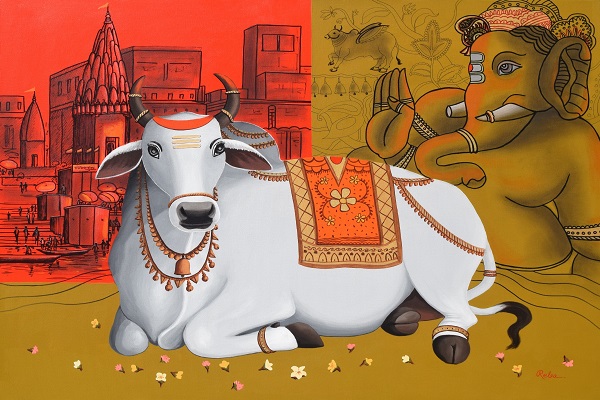
As you embark on acquiring contemporary art, one crucial compass must guide your expedition: a realistic budget. The budget should align your passion for collecting with the practicalities of your financial landscape.
1. Assessing Your Financial Landscape
Before diving into the art market, take a holistic look at your financial situation. Evaluate your disposable income, savings, and investment goals. Setting a realistic budget involves balancing your passion for art and your financial capacity.
2. Researching Market Trends
Stay informed about current trends and pricing benchmarks in the contemporary art market. Research recent sales, auction results, and the pricing history of artists whose work you're interested in. This knowledge empowers you to set a budget aligned with market realities.
3. Considering Additional Costs
Beyond the purchase price, factor in additional costs such as gallery commissions, framing, transportation, and potential maintenance. Understanding the comprehensive financial commitment ensures your budget is all-encompassing and avoids unforeseen financial strains.
Exploring Various Pricing Structures in the Art Market
As art enthusiasts and potential investors, delving into the diverse pricing structures of the art market is a pivotal step in understanding the dynamics that govern the valuation of contemporary art.
1. Primary Market vs. Secondary Market
Distinguish between primary and secondary markets. In the primary market, artwork is purchased directly from the artist or their representing gallery, often at lower prices. The secondary market involves the resale of artworks, which may include a premium based on an artist's growing reputation.
2. Emerging Artists vs. Established Artists
Explore the pricing structures associated with emerging and established artists. Emerging artists may offer more affordable pieces, while established artists might command higher prices. Understanding these dynamics allows you to align your preferences with your budget.
3. Limited Editions and Reproductions
Consider the availability of limited editions or reproductions, which can be more budget-friendly than original pieces. While not as unique, these options provide an entry point into owning an artwork by your favorite artists.
Developing a Strategic Approach to Art Investment
As art enthusiasts venture into the exhilarating landscape of collecting, the significance of developing a strategic approach to art investment becomes ever more pronounced. This journey transcends the boundaries of aesthetics, inviting individuals to navigate the dynamic interplay of creativity and financial insight.
1. Diversification of Art Portfolio
Similar to financial investments, diversification is key to mitigating risk. Develop a diversified art portfolio by exploring various artists, styles, and mediums. This approach ensures that your collection is visually stimulating and resilient to market fluctuations.
2. Long-Term vs. Short-Term Investment Goals
Clarify your investment horizon and goals. Are you seeking long-term appreciation, or do you have a shorter timeline in mind? Understanding your investment horizon enables you to make strategic decisions aligned with your financial objectives.
3. Building Relationships with Artists and Galleries
Establishing relationships with artists and galleries can provide insights into emerging talents and exclusive opportunities. Networking within the art community enhances your understanding of the market and may lead to favorable pricing or investment opportunities.
Steps Involved in Acquiring a Piece of Contemporary Indian Art
Acquiring Indian art is akin to entering a vibrant tapestry where culture, creativity, and expression converge. As we navigate through the galleries and studios, this guide will serve as your compass, offering insights into the research, communication, and decisions that shape the path to art ownership.
1. Research and Exploration
Before you buy Indian art, immerse yourself in the vast landscape of contemporary paintings. Explore galleries, attend exhibitions, and research online platforms to discover artists whose work resonates with you. Understanding your preferences and the current artistic trends will guide your selection process.
2. Establishing Contact
Once you've identified a piece or an artist of interest, initiate contact. Reach out to galleries, artists, or representatives to express your interest, seeking additional information about the artwork, the artist's background, and the piece's availability.
3. Physical Viewing
Whenever possible, view the artwork in person. This step is crucial for experiencing texture, color, and scale nuances that may not be fully captured in photographs. Visit galleries or arrange studio visits to connect with the artwork more deeply.
4. Price Inquiry and Clarification
Inquire about the pricing of the artwork, ensuring clarity on any additional costs such as framing, shipping, or installation. Understanding the pricing structure will help you assess the overall investment and make informed decisions.
5. Decision-Making and Agreement
After careful consideration, if you decide to proceed with the purchase, discuss the terms of the agreement. It includes confirming the purchase price, payment terms, and special conditions regarding the artwork's installation or delivery.
Legal Considerations and Documentation in Art Transactions
When you decide to buy Indian art, navigating the nuanced landscape of legal considerations and documentation is imperative. These aspects, often overlooked in the allure of artistic expression, play a pivotal role in ensuring the authenticity, value, and security of your art investment.
1. Authenticity and Provenance
Ensure that the artwork comes with proper documentation of authenticity and a clear provenance history. This documentation is crucial for establishing the legitimacy of the artwork and its value.
2. Invoice and Receipts
Request a detailed invoice outlining the agreed-upon terms and conditions before you buy Indian art. Keep all payment receipts and communication records. These documents serve as evidence of the transaction and can be essential for future insurance, resale, or donation purposes.
3. Certificate of Authenticity
A reputable artist or gallery should provide a Certificate of Authenticity (COA) with the artwork. This document typically includes details about the artwork, the artist's signature, and authentication information. Verify the legitimacy of the COA before finalizing the purchase.
Tips for Negotiating Prices and Securing the Best Deal
In the art world, negotiating prices requires finesse, knowledge, and a strategic approach. Whether you're a seasoned collector or a first-time buyer of Indian art, mastering the art of negotiation is key to securing the best deal and ensuring a gratifying acquisition experience.
1. Knowledge is Power
Equip yourself with knowledge about the artist, their market value, and the prevailing trends in the contemporary art scene. This information strengthens your negotiating position and helps you make informed decisions.
2. Polite and Respectful Communication
When buying Indian art, approach negotiations with collaboration rather than confrontation. Be polite, express genuine interest, and inquire about any flexibility in pricing. Establishing a positive rapport can lead to more favorable terms.
3. Consider Trade or Installment Options
In some cases, artists or galleries may be open to alternative arrangements, such as art trades or installment plans. Discuss these options to find a mutually beneficial agreement that suits both parties.
4. Be Prepared to Walk Away
Maintain a realistic budget and be prepared to walk away if the terms do not align with your financial comfort zone. This mindset can empower you during negotiations and prevent impulsive decisions.
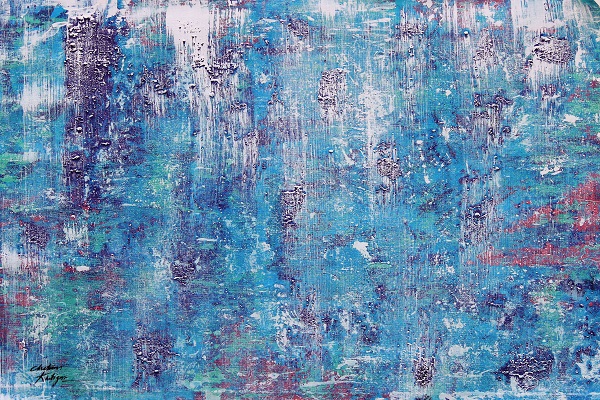
Wrapping Up
The handbook on purchasing contemporary art is not just a guide but an invitation to embark on a transformative journey. It beckons you to explore the vibrant narratives woven by artists, decipher the language of symbolism, and balance the passion for art with strategic investment decisions.
Explore the hand-picked range of contemporary art with Indian Art Ideas. Here, creativity meets curation to bring you a curated collection that transcends boundaries, celebrates diversity, and captures the vibrant spirit of contemporary Indian artistic expression.
FAQs:
-
Why do people buy contemporary art?
People buy contemporary art for its ability to evoke emotions, stimulate intellectual curiosity, and serve as a unique form of self-expression. It allows individuals to connect with the zeitgeist, support emerging artists, and enhance the aesthetic appeal of their living or workspaces. Ultimately, contemporary art represents a dynamic intersection of culture, individuality, and the ever-evolving dialogue of the artistic landscape.
-
Is contemporary art a good investment?
Investing in contemporary art can be lucrative, with the potential for financial appreciation and aesthetic enrichment. However, success depends on thorough research, understanding market trends, and a balanced approach that aligns personal taste with the potential for long-term value. As with any investment, it carries risks, but strategic choices and a diverse portfolio can contribute to a rewarding investment in the dynamic world of contemporary art.
-
When did contemporary art start in India?
Contemporary art in India began to gain prominence in the late 20th century, with the 1980s marking a significant shift. During this period, artists started exploring new forms, styles, and themes, reflecting a departure from traditional artistic norms and embracing a more diverse and experimental approach.











